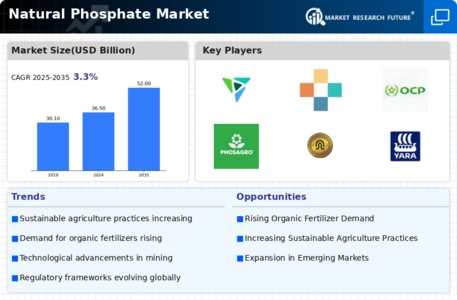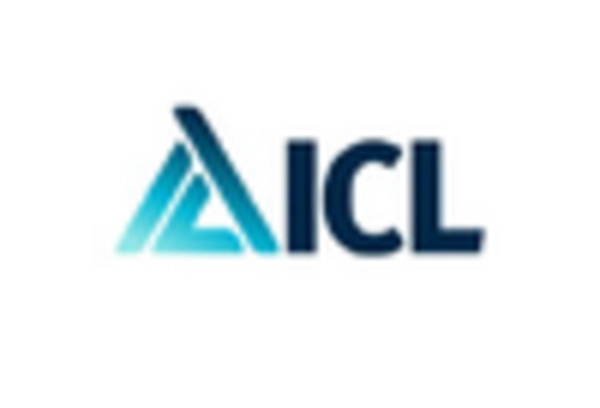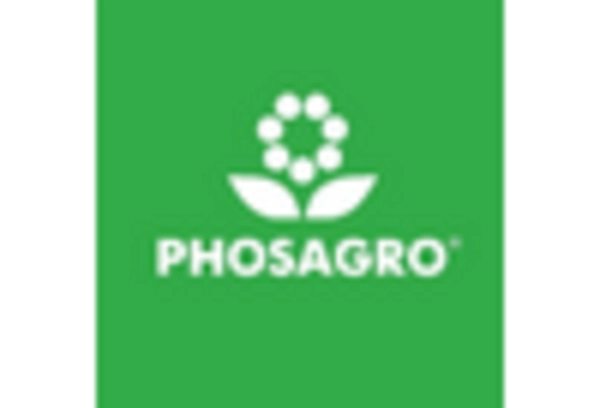Growing Awareness of Soil Health
There is a burgeoning awareness regarding soil health and its critical role in sustainable agriculture, which is influencing the Natural Phosphate Market. Farmers and agricultural experts increasingly recognize that maintaining soil fertility is essential for crop productivity. Natural phosphates are vital in replenishing essential nutrients in the soil, thereby enhancing its quality. This trend is reflected in the rising adoption of soil health management practices, which are projected to grow at a rate of 5% annually. As more stakeholders prioritize soil health, the demand for natural phosphates is expected to increase, thereby bolstering the Natural Phosphate Market.
Rising Demand for Organic Fertilizers
The increasing consumer preference for organic produce is driving the Natural Phosphate Market. As more farmers transition to organic farming practices, the demand for organic fertilizers, which often include natural phosphates, is expected to rise. In 2025, the organic fertilizer market is projected to reach approximately 10 billion USD, with natural phosphates playing a crucial role in this growth. This shift towards organic farming not only enhances soil health but also aligns with environmental sustainability goals, further propelling the Natural Phosphate Market. The emphasis on reducing chemical inputs in agriculture is likely to sustain this trend, as consumers become more aware of the benefits of organic products.
Increasing Global Population and Food Demand
The rising global population is driving an unprecedented demand for food, which in turn is influencing the Natural Phosphate Market. As the population is expected to reach 9.7 billion by 2050, the need for efficient agricultural practices becomes paramount. Natural phosphates are essential for enhancing crop yields and ensuring food security. The market for natural phosphates is projected to grow as farmers seek to maximize productivity while adhering to sustainable practices. This increasing food demand is likely to create a robust market for natural phosphates, positioning the Natural Phosphate Market for significant growth in the coming years.
Regulatory Support for Sustainable Practices
Regulatory frameworks promoting sustainable agricultural practices are becoming more prevalent, positively affecting the Natural Phosphate Market. Governments are implementing policies that encourage the use of organic fertilizers, including natural phosphates, to reduce environmental impacts associated with synthetic fertilizers. This regulatory support is likely to create a favorable market environment for natural phosphates, as compliance with sustainability standards becomes increasingly important for agricultural producers. The market could see a surge in demand as farmers seek to align with these regulations, thereby enhancing the growth prospects of the Natural Phosphate Market.
Technological Innovations in Phosphate Extraction
Technological advancements in mining and phosphate extraction processes are significantly impacting the Natural Phosphate Market. Innovations such as improved extraction techniques and processing methods enhance the efficiency of phosphate recovery from natural sources. For instance, the introduction of bioleaching and other environmentally friendly extraction methods has the potential to increase yield while minimizing ecological footprints. As these technologies become more widely adopted, they could lead to a more sustainable supply chain for natural phosphates. The market is likely to witness a shift towards these advanced methods, which may also reduce production costs and improve profitability for stakeholders in the Natural Phosphate Market.


















Leave a Comment